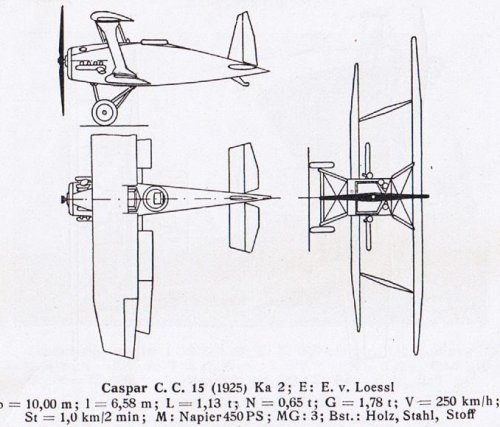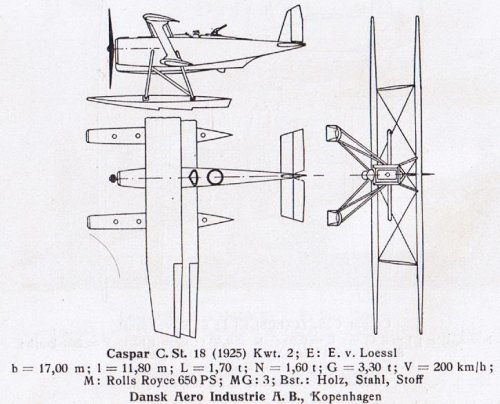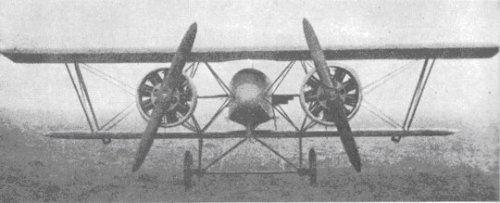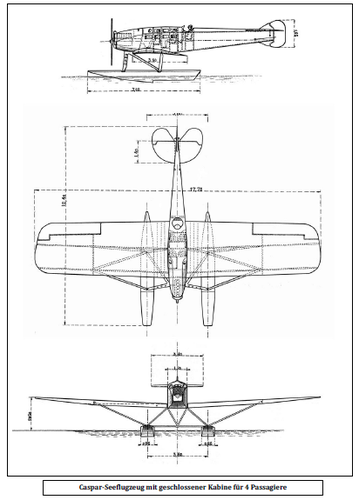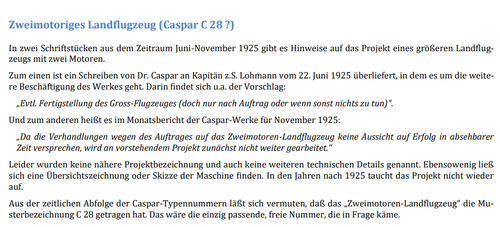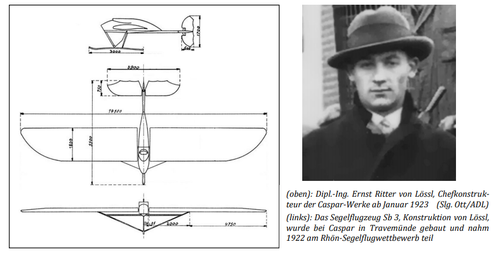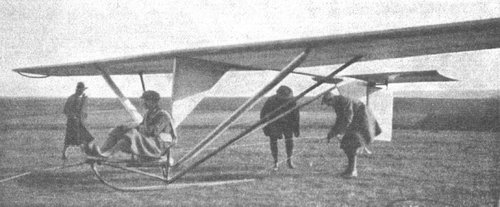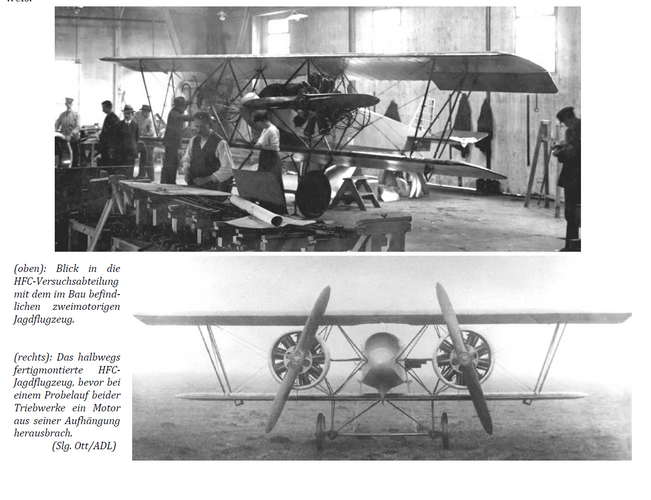A late reaction (it's holiday time…)
I don't know a CV nor a SJ (possibly the S I???).
The career of Karl Caspar (1883-1954) as an aeroplane builder began in 1911 with the creation of the "Centrale für Aviatik" in Wandsbek (Hamburg). After a fire it was relocated at Fuhlbüttel (Hamburg) in 1912, and was renamed "Hansa Flugzeugwerke".
At the beginning of WWI Karl Caspar became a military pilot, and the "Hansa Flugzeugwerke" were united with the "Brandenburgische Flugzeugwerke" to become the "Hansa- und Brandenburgische Flugzeugwerke".
After his demobilisation in 1916 Caspar left the firm and founded the "Hanseatische Flugzeugwerke Karl Caspar AG" of HFC in Fuhlsbüttel. He alsa participated in the "Flugzeugwerft Lübeck-Travemünde GmbH".
AIRCRAFT BUILT BY "HANSA FLUGZEUGWERKE"
- Hansa Taube: a rebuilt Rumpler Taube with Aeolus engine.
Gotha-Hansa Taube: copies of the Gotha Taube with Daimler Mercedes D I
Biplane Built in 1913/14. Gnome engine and push propellor. Five seats in a covered nacelle.
The Taubes were used in the HFC flying school.
AIRCRAFT BUILT BY "HANSEATISCHE FLUGZEUGWERKE KARL CASPAR AG"
- Experimental twin engined fighter (2 x Oberursel), built in 1917/18. During a ground test one of the engines broke loose and killed a technician. The development was stopped.
Other activities of HFC were the reparation of military aircraft, and the license building of Albatros C.III and Friedrichshafen G.III and G.IIIa.
After the war, Caspar closed his HFC, but acquired in December 1918 the "Flugzeugwerft Lübeck-Travemünde GmbH" in Travemünde. Here he created in 1921 together with Ernst Heinkel the "Caspar-Werke AG". Heinkel left the company already in 1922. Some of the aircraft were built in Denmark, due to the restrictions on German aircraft building.
In 1926 the "Caspar-Werke AG" were acquired by the Reichsmarine, and in 1928 the firm was closed. Afterwards the location was occupied by the E-Stelle See.
AIRCRAFT BUILT BY "CASPAR-WERKE AG"
- U 1: small U-Boot biplane, 1922. Two to the USA. Three built.
U 2: small U-Boot biplane, 1922. Two to Japan.
F 4: former military biplanes, converted in passenger planes with cabine.
S 1: low wing monoplane floatplane, 1923, with Maybach Mb IVa, Daimler Mercedes D IVa or Junkers L 5. Designed by Ernst Heinkel and afterwards built by Heinkel as the HE 1. Also assembled in Sweden.
CT 1: sports biplane with Daimler Mercedes D I. 1923.
CT 2b: variant of the CT 1. 1923.
CT 3: sports biplane with Bolle & Fiedler, 30 hp. Not very succesful. 1923.
CT 4: variant of the CT 2b with Daimler Mercedes D II. 1923.
CT 5: variant of the CT 2b with Daimler Mercedes D I. 1923.
CLE 11: high wing monoplane with Siemens Sh 5 and cabine for two passengers. Pilot in open cockpit. One built in 1923.
CLE 12: passenger plane with Maybach Mb 4a and cabine for 8 passenger. Develloped from the CLE 11. One built in 1924.
CJ 14: biplane fighter, one built in 1924. Assembled and tested by Dansk Aero in Denmark. One Armstrong Siddeley Jaguar III, 325 hp.
CS 14 (also C 14): reconnaissance biplane, one built in 1924. Assembled and tested by Dansk Aero in Denmark. One Napier Lion, 450 hp.
CC 15: 1924 project of a biplane floatplane with Napier Lion, 450 hp, or Rolls Royce Eagle, 600 hp. Not built.
CLE 16: another 1924 passenger plane with Siemens Sh 5 and cabine for two passengers, develloped from the CLE 11.
C 17: sports low wing monoplane with ABC Scorpion, 28 hp. 1924.
CST 18: 1924 project of a biplane fighter floatplane with Rooles Royce Condor or Hispano Suiza, 300 hp. Not built.
C 23: two seat sports biplane with Daimler Mercedes D I. 1925.
C 24: variant of the C 23 with Daimler Mercedes D II. 1925.
C 26: variant of the C 23 with Bristol Lucifer, 100 hp. 1926.
C 27: two seat trainer biplane floatplane with BMW IV. 1926. Two built, but not succesful.
C 29: two seat military biplane floatplane with Hispano Suiza 12J. 1926.
C 30 (also LE 30): two seat reconnaissance biplane, one built in 1926. Assembled and tested by Dansk Aero in Denmark. One Hispano Suiza, 500 hp.
C 32: 1926 single engined high wing cargo plane with BMW IV or Va. A C 32 with a Junkers L 5 (D-1145) was prepared for a transatlantic flight which never took place.
C 33: two seat sports biplane with Armstrong Siddeley Mongoose, 125 hp. One built in 1928.
C 35 Priwall: biplane passenger plane with BMW VIu. One built in 1928. Later rebuilt as C 35c cargo plane.
C 36: two seat reconnaissance biplane, one built in 1928. One BMW VI.
C 36-See Bayern: floatplane develloped from the C 36. One built in 1928.

